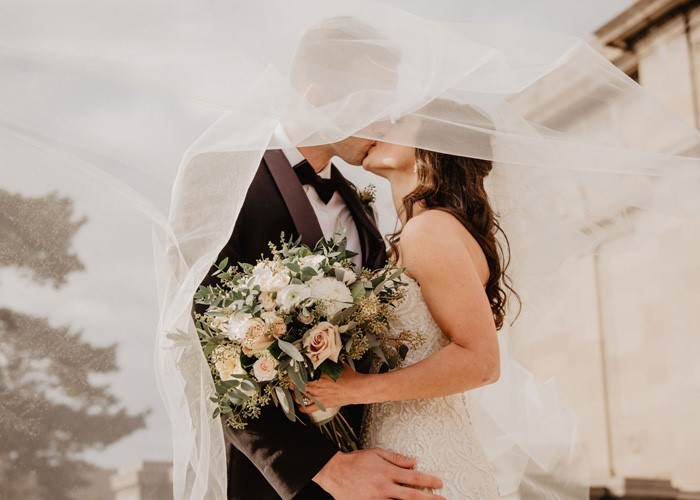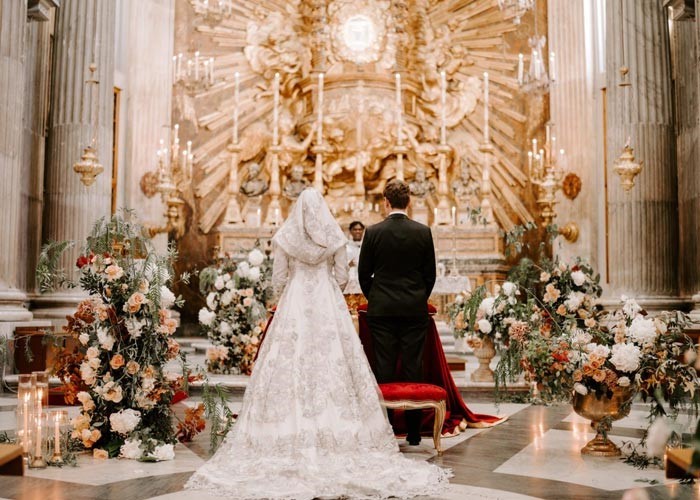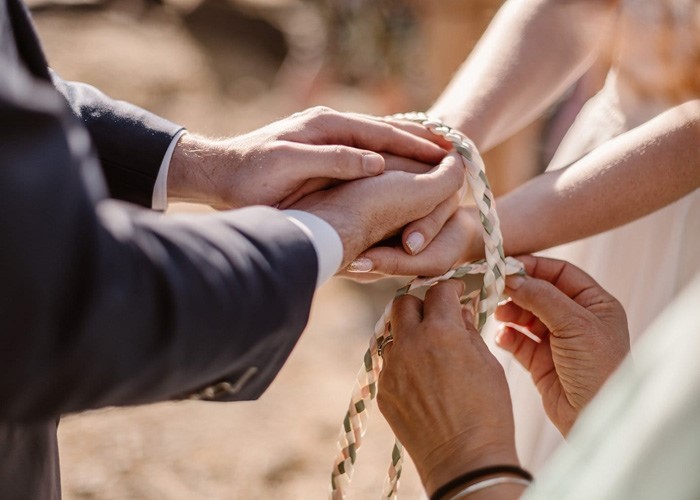WEDDING CEREMONY IN ITALY: CIVIL, RELIGIOUS OR SYMBOLIC?
27th April 2022
In the initial stages of the planning, all future spouses find themselves having to decide the type of ceremony of their wedding: civil, religious or symbolic? Each has different characteristics and important choices will depend on it, such as that relating to the selection of the locations for the ceremony and reception.
In this article I will explain what the main differences among the types of ceremony if you are going to get married in Italy so that you can choose the solution that is closest to your tastes and needs.
CIVIL WEDDING CEREMONY
In Italy for a marriage to have civil validity, it is necessary to get married in the municipality or in a civil ceremony in a venue acknowledged as a “municipal house”. Although the celebration of civil wedding is quite simple, sometimes it can happen to run into long waits, due to the timing of the certificates issue by the municipal offices, without forgetting the bureaucratic stuff with the consulate.
If one or both of you have residential address in Italy, the first step of the bureaucratic process consists in requesting "pubblicazioni" from your municipality of residence. The employees will compile all the necessary documentation for you in order to block the date for the "promesse" of marriage (also called "giuramento"), which will be communicated to you at a later time. That day you will go to the municipality, you will be accompanied by a witness and a parent who will prove your non-consanguinity; if the parents cannot attend, you will have to bring a declaration from them, in which they certify that you are not related.
In addition, remember to bring the following documents:
- a valid identity document;
- a form to be purchased at the municipal district (the cost varies according to the type of marriage).
At the end of the "giuramento", you will proceed with the signing of the request for "pubblicazioni", which will be exhibited at the door of the Municipal House and in your municipalities of residence. After 8 days + 3 without third party objections, you will have 6 months to get married.

The civil wedding ceremony is usually celebrated in the presence of the mayor (or his delegate) who reads Articles 143, 144, 147 of the Italian Civil Code, concerning the marital duties sanctioned by the union. Subsequently, the officiant pronounces the formal sentences followed by the exchange of wedding rings and the signing of the registers by the newlyweds and witnesses.
Often this formula turns out to be a bit "sterile" as it is reduced to a simple reading of articles: my advice is to entrust you to a professional celebrant who takes the place of the municipal official, who will still be present for the signing of documents.
Whether it is a wedding in the municipality or elsewhere, the civil ceremony is a more essential type but you have the possibility to personalize it with poems, readings or symbolic gestures. If you want to avoid hiring a professional celebrant, a civil wedding can also be officiated by a friend or relative as long as they are of age and have civil and political rights. This will give the ceremony a more intimate and engaging tone!
RELIGIOUS WEDDING CEREMONY
If you are dreaming of a religious wedding in Italy, you will need the mandatory documents for the civil ceremony and those necessary for a wedding in the Catholic church. These are the certificate of Baptism, the certificate of Confirmation, the certificate of free ecclesiastical status and the certificate of participation in the prenuptial course. Furthermore, if you wish to have a religious wedding in a diocese other than yours, it is also necessary to have an ecclesiastical "nulla osta" issued by your parish to which you belong.
But what happens in a mixed marriage when one member of the couple is atheist or of another creed? In this case, religious marriage can be celebrated in church, according to the Catholic rite and with the presence of two witnesses, under the following conditions:
it is essential that the part of the Catholic religion (husband or wife) has received the sacraments of Baptism, Communion and Confirmation and that they declare themselves ready not to abandon their religion and to educate their children to the Catholic faith;
- the other part, atheist or of another creed, is not obliged to convert to Christianity but is called to promise not to hinder the faith of the other or the Catholic education of any children and to accept and sharing the values of marriage (uniqueness, exclusivity, indissolubility and fruitfulness).
Remember that for a mixed marriage in church to be considered valid in force of the Latin Church laws, it is necessary to request the license of the Bishop of the diocese in which the rite is celebrated: in this case you should contact the parish priest of the church where the wedding will be held.

During the celebration of the wedding in church, there is a detail that never goes unnoticed: the mass booklet that allows to follow the ceremony more carefully. As Ministers in the Sacrament of Marriage, it will be up to you to choose the readings from the Bible and how to formulate consent.
The complete version of the mass booklet contains:
- Introductory rites
- Memory of Baptism
- First Reading
- Responsorial Psalm
- Second Reading
- Extract of the Gospel
- Promise
- Blessing of the rings
- Wedding blessing
In particular, the First and Second Reading of the wedding are selected by the spouses (respectively from the Old and New Testament) and during the ceremony, they are read by two loved ones chosen by the couple. I advise you to choose who will carry out this delicate task well in advance, so that those directly involved have the time to prepare themselves in the best possible way.
Finally, there's what we call "matrimonio concordatario" recognized by the Catholic Church and by the Italian state. Since it is celebrated with a religious rite by a minister of the Catholic Church and transcribed in the registers of the municipality, it also has civil effects. Its name originates from 1929 when the Lateran Concordat agreement was signed between the Italian State and the Holy See so that the "concordat marriage" were introduced in religious ones. Basically, it consists of the union between religious and civil marriage: at the end of the ceremony in the Church, in fact, the priest reads articles 143, 144 and 147 of the Italian Civil Code.
The priest then draws up the marriage certificate in double original; one of the documents must be sent, together with the transcription request, to the mayor of the municipality of the town where the ceremony took place, within 5 days of the wedding. If the marriage certificate is regular, it will be transcribed by the mayor and communicated to the priest who will report the communication received on the marriage register so that everything remains kept in the parish archive. At the end of the procedure, the newlyweds are legally married.
SYMBOLIC WEDDING CEREMONY
The symbolic wedding is an informal ceremony that gives a touch of romanticism without any religious or juridical ties. For this reason it is the favorite ceremony of those who choose to get married abroad and it can take place wherever you want.
By the way those who intend to make their marriage legal must have it in the municipality (in their own country or in Italy) or in a location recognized as a "municipal house". Many couples, for convenience, decide to have the wedding ceremony and reception in the same place but what is most important is that you choose a place that talks about you and your love.
Among the most common symbolic wedding rites we have:
Sand rite: groom and bride each have a bowl of sand in different colors, which they will pour into a single larger bowl as a symbol of their union;
Light rite: the spouses light, each with their own candle, a candle placed in their midst (metaphor of love that feeds a single fire);
Handfasting, widespread in Ireland and Scotland: the spouses cross their hands to form the symbol of infinity and the officiant has the task of tying them with colored ribbons to symbolize their bond;
Ring Warming: wedding rings will pass between the guests, who will kiss them or bring them to the chest as a sign of good luck, before being worn by the bride and groom;
Rose rite, the most romantic of all: the spouses each exchange their own rose, symbolically giving each other's life. Then both roses are placed on a table, inside a vase, for the entire duration of the ceremony.

You can decide to entrust the role of celebrant to a professional or to a person dear to you, who is good at managing their emotions and entertaining guests. In my opinion, it is better to opt for a professional celebrant, able to support you in the most practical matters; someone to meet you in advance and then create an exciting tale of your story to be told during the ceremony. In case you have chosen to integrate the symbolic rite to the reading of the articles to make the marriage legal, refer to what has been said in the paragraph dedicated to the civil wedding ceremony.
Finally, to make everything even more touching, think about speeches from friends and/or relatives during the ceremony: as a wedding planner, I always make sure that the all texts of vows and speeches reach the graphic designer without being intercepted by the future spouses!